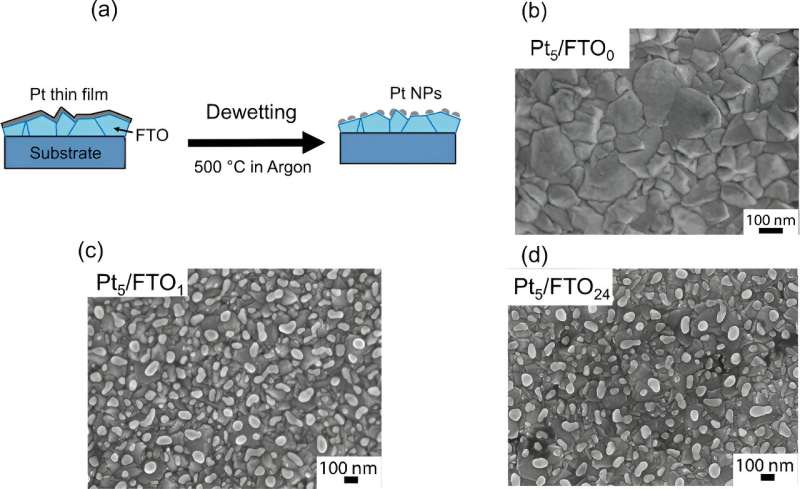
In a step towards sustainable energy, a team of researchers at the University of Twente led by Dr. Marco Altomare has demonstrated a new method to reduce the use of precious metals such as platinum in green hydrogen production without sacrificing performance.
The researchers published their findings in the journal Advanced Functional Materials in a paper titled "Dewetting of Pt Nanoparticles Boosts Electrocatalytic Hydrogen Evolution Due to Electronic Metal-Support Interaction."
The world urgently needs to transition to sustainable energy sources to combat climate change and the energy crisis. Green hydrogen is an important step, and a large-scale hydrogen economy needs efficient, compact, and resilient technologies.
Polymer electrolyte membrane (PEM) water electrolyzers and fuel cells use precious metal catalysts such as platinum and iridium to make hydrogen production and conversion as efficient as possible. However, these catalysts are expensive and scarce and thus limit large-scale development of hydrogen technologies.
Accordingly, by 2026, the U.S. Department of Energy (DOE) wants to achieve performances that are about five- to 10-times higher than current cells, with less than 20% of the currently used amount of these metals (currently, about 3 mg/cm2 as total loading of platinum and iridium)—a grand scientific and technological challenge.
No loss in performance
Studying platinum as a model catalyst, the team of Dr. Marco Altomare, in collaboration with partners from Erlangen (Germany) and Pavia (Italy), combined physical vapor deposition (PVD) and controlled thermal treatments (known as solid-state dewetting) to create highly active and durable electrodes with minimized amounts of precious metal.
"According to our preliminary lab experiments, with our approach, we can potentially reduce the amount of precious catalyst needed by five times. All without loss in H2 generation," points out Shreyas Harsha, the Ph.D. researcher at the forefront of the project.
Dr. Marco Altomare adds, "Our method is completely chemical-free, hence safer and with no waste of precious catalyst precursor, and it is scalable—in fact, similar thin film deposition methods are already used at scale in various industrial applications, and our facilities at the University of Twente are already suited to coat catalysts layers on surfaces of up to a few 100 cm2."
Further reduction
The team of Dr. Marco Altomare now aims to achieve the next target, in collaboration with Dutch research centers and companies. The researchers want to test their electrodes under industry-relevant conditions, to demonstrate and validate efficient and stable water electrolysis operation with noble metal loadings reduced to less than 0.5 mg/cm2.
Achieving this breakthrough holds great promise for the future of green hydrogen production and sustainable energy.
More information: Shreyas Harsha et al, Dewetting of Pt Nanoparticles Boosts Electrocatalytic Hydrogen Evolution Due to Electronic Metal‐Support Interaction, Advanced Functional Materials (2024). DOI: 10.1002/adfm.202403628
Citation: Less is more: Efficient hydrogen production with less precious metals (2024, July 22) retrieved 22 July 2024 from https://techxplore.com/news/2024-07-efficient-hydrogen-production-precious-metals.html
This document is subject to copyright. Apart from any fair dealing for the purpose of private study or research, no part may be reproduced without the written permission. The content is provided for information purposes only.
